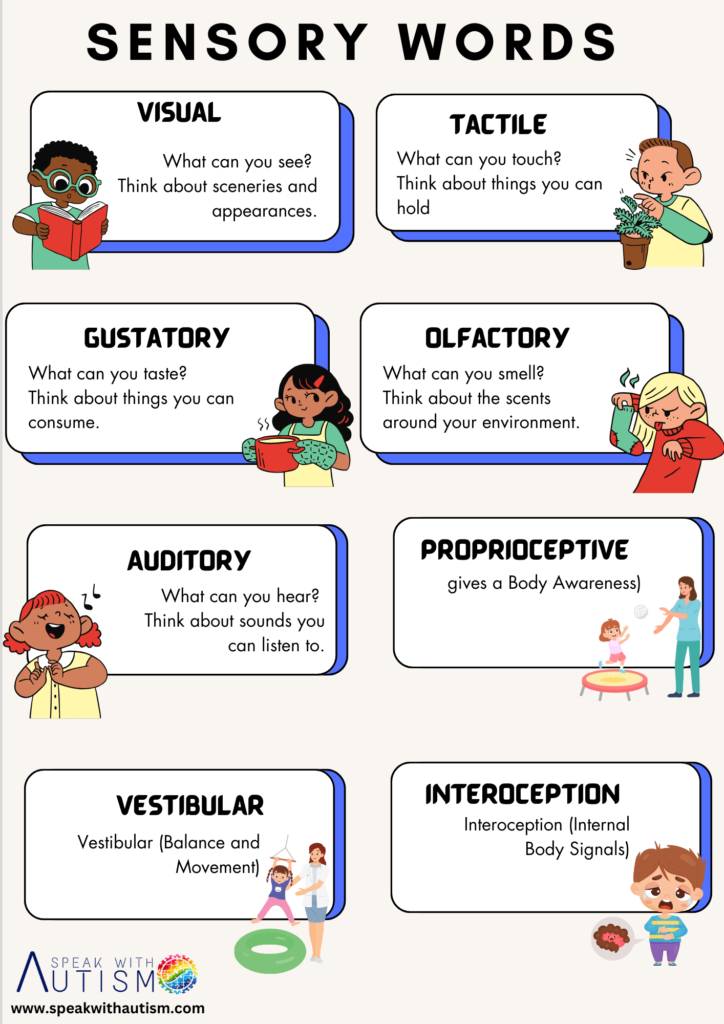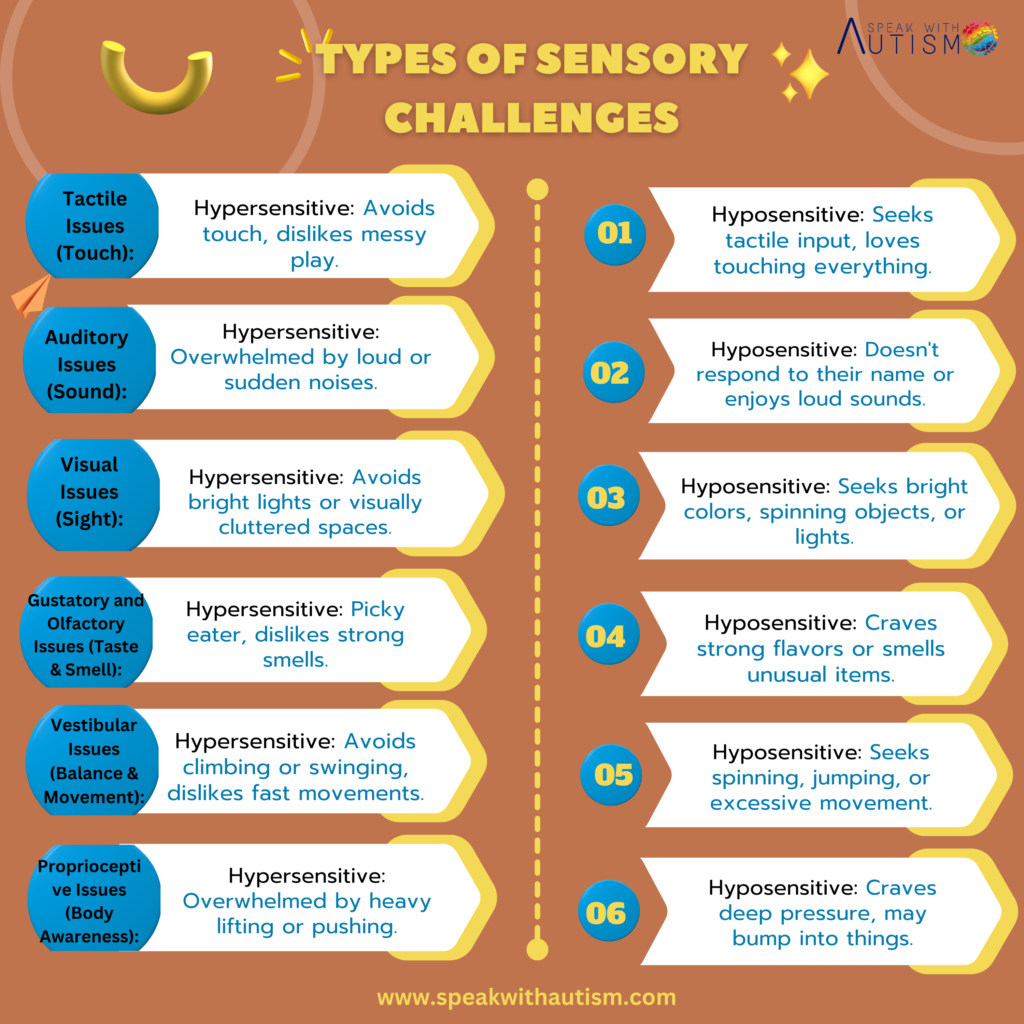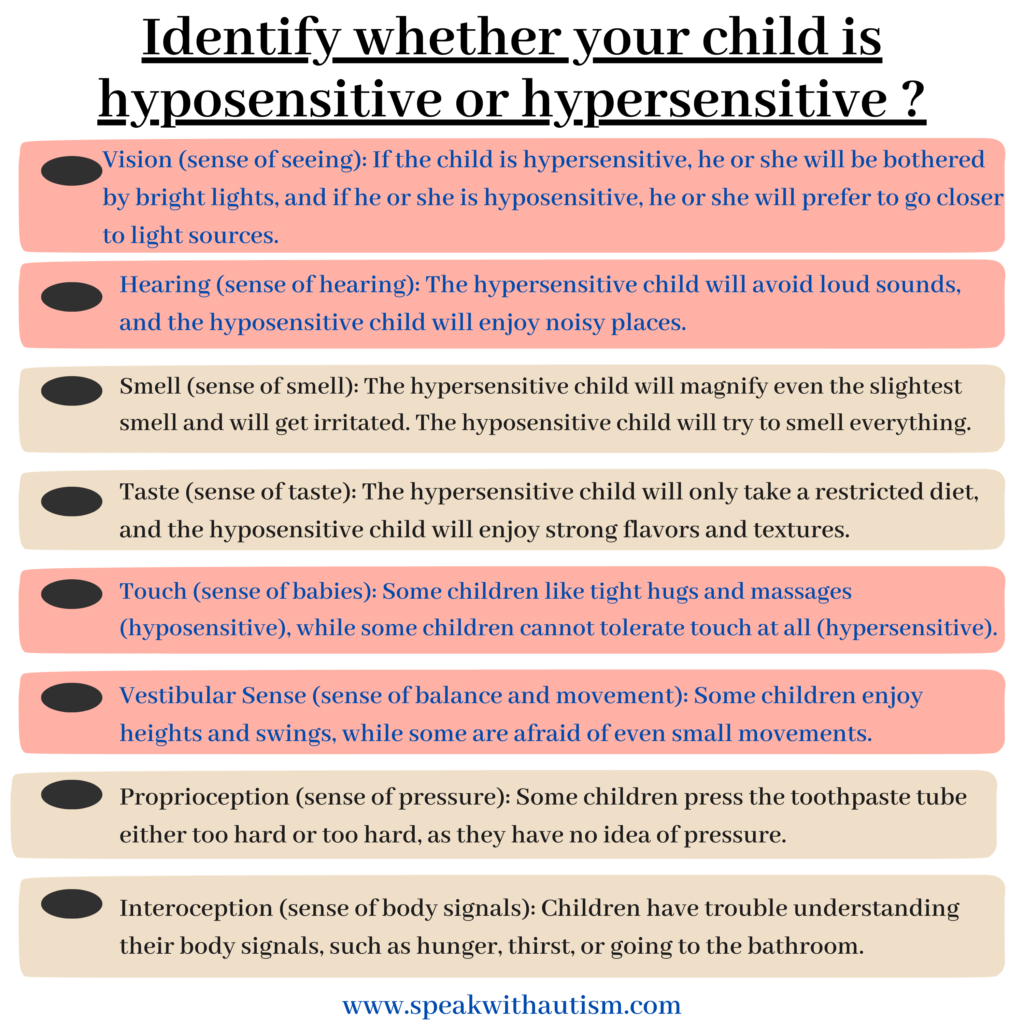Behavioral Issues in Autism often display unique behaviors that may seem challenging to understand or manage. These behaviors can include difficulties with communication, social interaction, repetitive actions, or sensory sensitivities.
Have you ever noticed that when you take your children out somewhere, like to a mall, they become uncomfortable? Or if they get hurt while walking, they do not react as much as people normally do? All these things can be related to sensory processing disorder. In today’s blog, we will understand sensory processing disorder in detail.
Table of Contents
You might have heard about sensory processing disorder from your therapist or special educator. People have different types of questions regarding this topic. Many behavioral issues or patterns a child displays or shows may be due to a sensory processing disorder. But what is sensory processing disorder and how do we know if our child has it? We will talk about this topic in today’s blog.
What is sensory processing disorder?
Senses help us interact and understand the environment around us. We all take in and process sensory input in our own way, but in some children, this processing does not happen properly. Sometimes the signals reach the brain too loud and sometimes too soft. This imbalance creates hyper or hyposensitivity, and this condition is called sensory processing disorder.
You may have noticed that some children like a tight hug a massage, and deep compression, while some others run away from touch. Similarly, some children like loud music, while others are disturbed by even mild noise. All of this happens due to sensory inputs.
Impact of senses and sensory issues

When we talk about senses, we mostly think about 5 senses:
But there are 3 more senses
6. Vestibular sense – a sense of balance and motion. If this is imbalanced, the child may have a fear of height or discomfort due to swing.
7. Proprioception – a sense of pressure. example: sometimes Children either press the toothpaste very hard or press it lightly.
8. Interception – sense of body signals and feelings, such as feeling hungry, stomach fulfillment, feeling for toileting, and urine pass out or tired.
If there is an imbalance in these senses, the child’s concentration and learning are affected. Behavioral issues can also develop, such as irritability, lack of focus, and inappropriate reactions.
Two types of Sensory needs
It is a condition in which the brain has difficulty processing sensory inputs, causing sensory inputs to feel either extremely intense (hypersensitivity) or very mild (hyposensitivity). Each child is different and their sensory needs are different.
Behavioral Issues in Autism
We have 8 major senses and it is important to understand both the hypersensitive and hyposensitive scenarios of each sense:

1. Vision or Visual sense (sense of seeing)
Hypersensitivity
- Bright lights or fluorescent lights bother them.
- Fast-moving or cluttered visuals (such as crowded areas) are overwhelming for them.
Hyposensitivity
- They have poor response to dim lights or low visuals.
- They prefer to go close to lights and look directly at them.
2. Auditory Sensory Processing Disorder OR Hearing (sense of hearing)
Hypersensitivity
- They are afraid of loud sounds (such as fire alarm, mixer).
- Certain specific pitches irritate them.
Hyposensitivity
- They like loud environments and frequently go close to noisy toys.
- They do not pay attention to soft sounds.
3. Smell (sense of smell)
Hypersensitivity
- They immediately detect strong or mild smells and are uncomfortable with them.
- They avoid certain smells (like perfumes or food smells).
Hyposensitivity
- They have a habit of smelling everything.
- Bad smells also do not bother them.
4. Taste (sense of taste)
Hypersensitivity
- They avoid specific textures or flavors (spicy or crunchy things).
- They only accept blended or plain food.
Hyposensitivity
- They like strong and bold flavors (like sour candies or extra spicy food).
- They try to put everything in their mouth to explore it.
5. Touch (touch sense)
Hypersensitivity
- Light touch (such as putting a hand on someone’s shoulder) is uncomfortable.
- Cannot tolerate certain fabrics or textures.
Hyposensitivity
- Likes tight hugs, rough textures, or deep pressure.
- Does not react to pain or temperature changes.
6. Vestibular sense (Balance and movement)
Hypersensitivity
- Fears heights, swings, or fast movements.
- Spinning or sudden jerks disorient them.
Hyposensitivity
- Likes fast swings or roller coasters.
- Always jumping or spinning.
7. Proprioception (Pressure and Body Awareness)
Hypersensitivity
- Light or uneven pressure (such as tight shoes) is uncomfortable.
- Cannot properly control body movement.
Hyposensitivity
- Enjoy tight hugs and carrying heavy objects.
- Press things too hard, such as a pencil or toothpaste tube.
8. Interoception (Body’s Internal Signals)
Hypersensitivity
- Amplify slight discomfort or pain.
- Focus on your body signals all the time.
Hyposensitivity
- Don’t notice hunger, thirst, or going to the bathroom.
- Sometimes he does not even feel hot or cold.

Conclusion
The effect of sensory processing disorder is different for each child. Parents need to understand their children’s needs to manage both sensory imbalances, such as hypersensitivity and hyposensitivity. If your child seems more or less responsive to a sense, they can be supported with sensory activities and therapies.
Frequently Asked Questions (FAQ’s)
Have you ever noticed that your child feels uncomfortable when going out to the mall or does not respond normally to an injury?
Yes, it is possible that your child is suffering from sensory processing disorder (SPD). In sensory processing disorder, the brain is unable to process sensory input properly.
What is sensory processing disorder?
Sensory processing disorder is a condition in which the brain is unable to process sensory input properly. Some children feel input too intense (hypersensitive), while others feel too faint (hyposensitive).
Does sensory processing disorder affect behavior?
Yes, it affects children’s behavior and ability to learn. The child may have difficulty concentrating, making correct decisions, and learning new things.
Which senses can be affected by sensory processing disorder?
Eight senses can be affected:
Vision
Hearing
Smell
Taste
Touch
Vestibular
Proprioception
Interoception
What can be the sensory processing issues related to vision?
1. Hypersensitive: Trouble with bright light, comfort in darkness.
2. Hyposensitive (less sensitive): Likes bright lights, and tries to bring a toy near the eyes.
What are the symptoms of auditory (hearing) issues?
Hypersensitive: Trouble with loud noises, closes ears.
Hyposensitive: Likes loud sounds and noises.
How to identify sensory issues related to touch?
Hypersensitive: Trouble with massage, hair cutting, or nail clipping.
Hyposensitive: Constant desire to touch things.
How is a vestibular sense issue detected?
Hypersensitive: Fear of heights or swings.
Hyposensitive: Enjoy jumping from heights and swinging on swings.
Why is it important to pay attention to sensory issues?
If not paid attention to time, it can have a negative impact on the child’s learning ability, behavior, and social interactions.
Does every child have sensory processing issues?
Yes, it can occur not only in children with developmental disorders but also in normal children.
